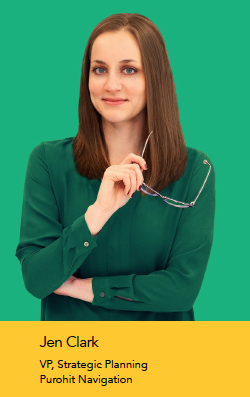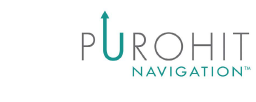 By guiding healthcare clients to breakthrough strategy and impossible-to-ignore creative, they leave behind the expected and realize the exceptional.
By guiding healthcare clients to breakthrough strategy and impossible-to-ignore creative, they leave behind the expected and realize the exceptional.
The advantage of covering the entire healthcare ecosystem, according to Jen Clark, VP, strategic planning at Purohit Navigation, is that her company can offer strategic guidance, creative direction, and commercial support to help brands reach their fullest potential. From discovery to portfolio management, Purohit Navigation guides clients across the product lifecycle continuum — and beyond — to new opportunities and commercial influence.
“One of the benefits of our holistic approach is that we can map early on in the discovery phase the key attributes that are going to be essential to market success and proactively build these into the initial preclinical and clinical development plan," Jen says. “Along with this long-term view, there’s a need to build in flexibility that allows for adjustments as dynamics change and new insights are identified so that we can follow the most successful commercial path vs. a predetermined one."
It’s no secret that over the years, patients and caregivers have become more influential in the healthcare journey, and this dynamic only accelerated during the COVID-19 pandemic. “We’ve seen that patient needs and preferences have to be considered even earlier in commercial and product development strategy, for example transforming how we think about clinical trial design and recruitment," Jen explains. “The evolution to telemedicine and other novel ways of delivering healthcare also means that patients have more influence and self-advocacy in their care that will impact how decisions are made and will require engaging patients early on in the commercial planning process."
Jen notes the essential foundation to commercial strategy is a true understanding of behavior, which is one of the hallmarks of Purohit Navigation’s approach to everything the company does on behalf of its clients to bring meaningful medicines to market.
“Over time, algorithmic thinking can become ingrained, making it essential to map the behavioral continuum," she says. “Through this process, we can find the intervention points that are easiest to impact and most influential in seeding uptake. Because the market is dynamic, it’s important to also establish behavioral metrics, mechanisms for gaining insights, and flexibility to adjust the strategy to meet the evolving market."
Purohit has charted a path to successful commercialization strategies by identifying the roadblocks that can derail a company’s goals. One of the biggest detriments is allowing structure to dictate strategy. “When structures like teams or processes exist and we build a strategy around that, vs. thinking about what is going to maximize the market, we can limit ourselves," Jen says. “This can take the form of adhering to a specific approach to developing a commercial strategy, like using strict templates or a rote planning process instead of allowing creative thinking to develop a dynamic  approach that embraces the unpredictability of the strategic process.(PV)
approach that embraces the unpredictability of the strategic process.(PV)










